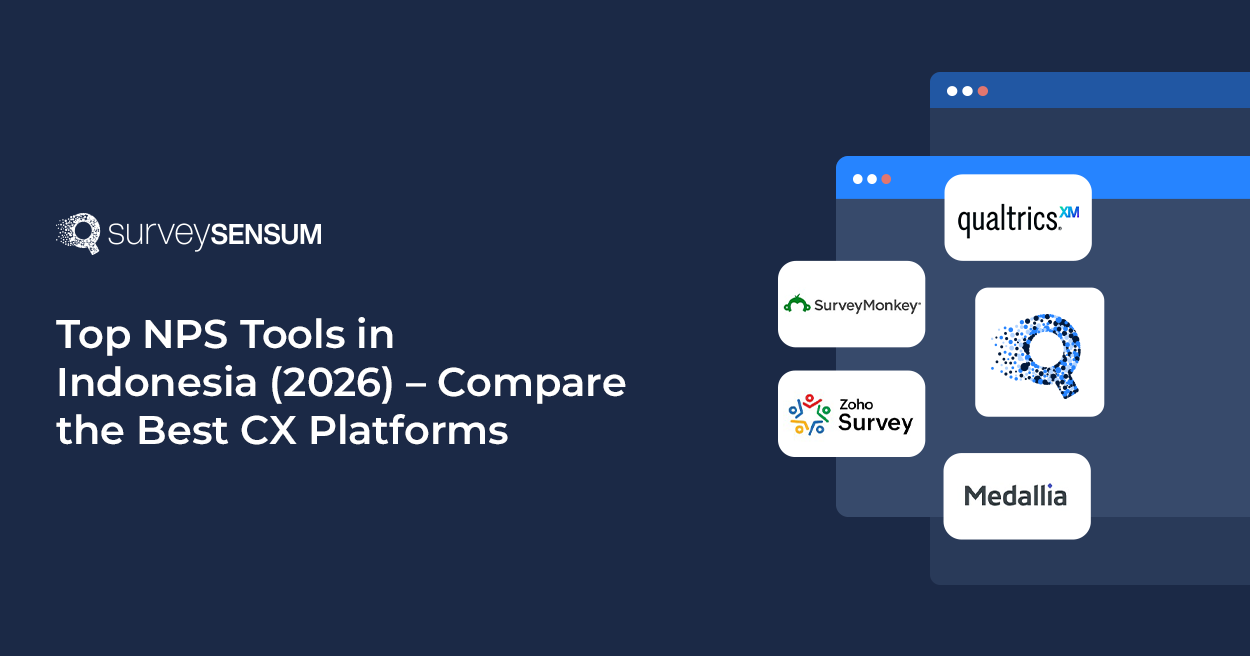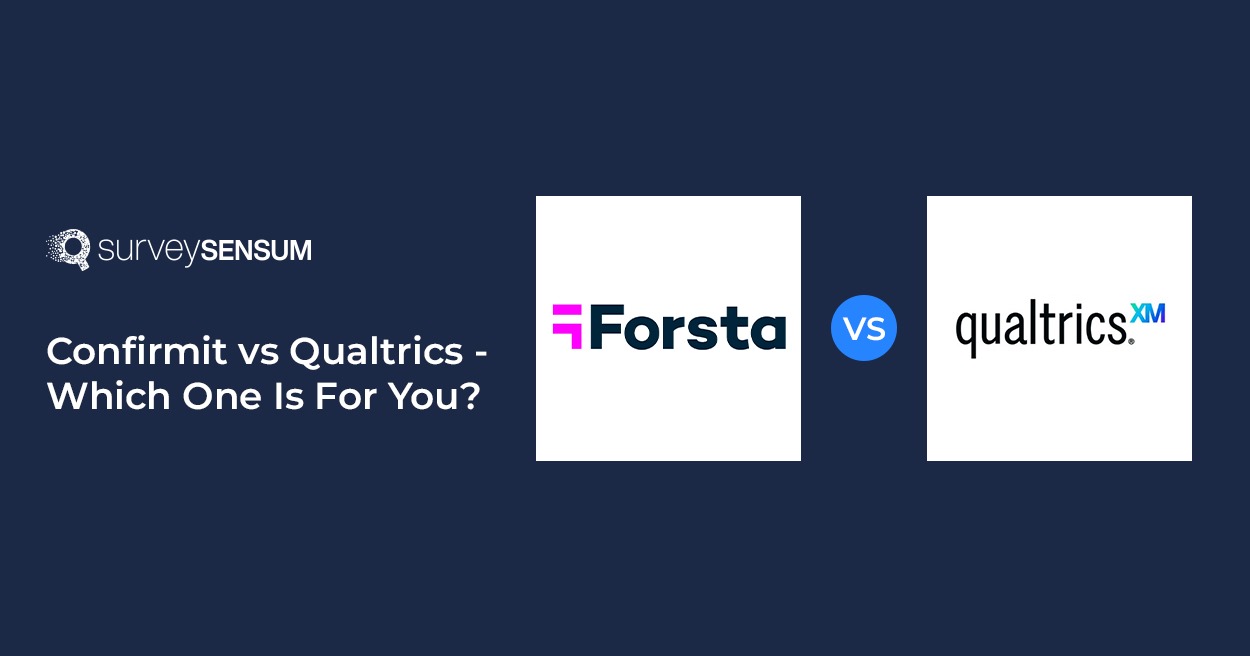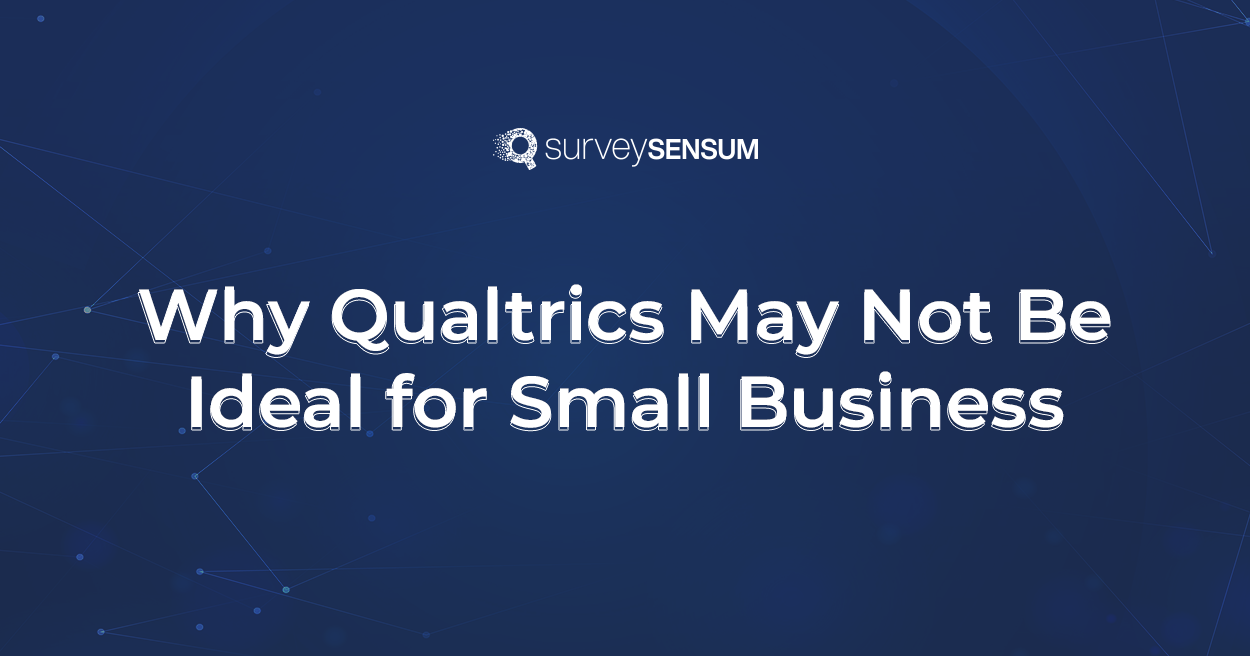

What sets you apart from your competitors – a product that actually meets the needs of your customers?
But how to know if it’s ACTUALLY working?
Fret not, you don’t need to pay big bucks to consulting firms to investigate this. All you need here is to use a simple customer satisfaction metric known as Net Promoter Score (and of course a robust NPS software!).
This metric will help you identify the areas where you are excelling, or lacking, and whether or not your product is actually meeting the customer’s expectations. So, let’s scroll down and explore the pros and cons of using NPS and its impact on your customer satisfaction.
What is NPS?

NPS is a metric used to measure customer loyalty and satisfaction. It provides insight into how likely customers are to recommend a company’s products or services to others. It is based on a single-question survey – “On a scale of 0 to 10, how likely are you to recommend [company/product/service] to a friend or colleague?”
But, Why Use NPS?

1. Simple and Straightforward
The number one reason for NPS’s popularity is its simple yet powerful methodology. Unlike complex customer satisfaction metrics, NPS relies on a single question: “How likely are you to recommend our product/service to a friend or colleague?” This straightforwardness of this metric allows for easy comprehension by both customers and businesses, minimizing confusion and ensuring consistent interpretation of results.
Additionally, NPS’s minimalist approach allows businesses to swiftly gather feedback from customers across various touchpoints. This accessibility enables businesses to continuously monitor customer satisfaction levels and identify areas for improvement in real-time, fostering agility and responsiveness in addressing customer needs.
An ideal NPS survey should look like this:
- On a scale of 0-10, how likely are you to recommend our product to friends and colleagues?
- Please suggest the reason behind your score.
2. Higher Response Rate
The popularity of NPS doesn’t stop with its simplicity. Apart from the simple and straightforward nature of this metric, it is also popular for its ability to yield higher response rates compared to more complex customer satisfaction surveys.
One of the key factors contributing to the higher response rates of NPS is its concise and focused nature. Unlike traditional surveys that bombard customers with way too many questions covering various aspects of their experience in a single survey, NPS centers around a single, straightforward inquiry – the customer’s likelihood of recommending a product. This results in a short survey, with only 2-3 NPS questions, and makes it easy for customers to respond with relevant information.
→ Here’s how to improve your NPS response rate.
3. Easy to Track

Since NPS is simple, straightforward, and also gathers a high response rate, it is obvious that it is also one of the easiest metrics to track.
One of the primary reasons for the ease of tracking NPS is its standardized methodology. The NPS loyalty question remains consistent across all touchpoints, allowing businesses to maintain continuity in data collection. This standardized approach simplifies data aggregation and analysis, facilitating seamless tracking across different customer segments, time periods, and channels.
Measure, analyze, and track your NPS score over time and evaluate your NPS performance better with SurveySensum
4. Predictor of Growth
NPS is popular not just for measuring customer loyalty, but also for its predictive nature. It serves as a predictor of growth for businesses, offering valuable insights into customer loyalty and its impact on key performance metrics such as revenue, market share, and profitability.
In fact, according to a study by Bain & Company, in most industries, NPS explains roughly 20% to 60% of the variation in organic growth rates among competitors. On average, an industry’s Net Promoter leader outgrew its competitors by a factor greater than two times.
In other words, a company’s NPS is a good indicator of growth. So, leveraging NPS as a predictor of growth will enable businesses to anticipate future success, identify areas for improvement, and align their strategies better.
Additionally, NPS facilitates benchmarking and comparison, enabling organizations to assess their performance relative to industry peers and competitors. By doing this businesses gain insights into their competitive position and identify areas where they can differentiate themselves to drive growth.
5. Quantifies Word-of-Mouth Traffic
According to research by Nielsen, 92% of customers around the world say they trust earned media, such as recommendations from friends and family, above all other forms of advertising.
92% is a huge number and can help you boost your customer satisfaction as well as your revenue. This is where NPS steps in.
At its core, NPS captures the likelihood of customers recommending a brand and by doing this it directly assesses their inclination to engage in positive word-of-mouth promotion. And not only that it also highlights the segments of customers that are dissatisfied with you.
By segmenting the score, businesses can easily identify segments of customers that have the highest and lowest likelihood for brand advocacy and tailor marketing strategies to leverage promoter’s influence, as well as motivate detractors. This targeted approach maximizes the impact of word-of-mouth promotion and enhances customer engagement and retention.
So, launch your first NPS survey with SurveySensum and maximize the impact of word-of-mouth promotion.
6. Benchmark Against Competition
NPS is the only metric that not only gives you insight into your own performance but also tells you your position among your competitors. But why is that important?
Let’s say you measured your NPS and got a score of 50, now ideally it can be a good score as it is positive but you are still not seeing any changes in customer loyalty, why is that? This is because even though you have a score of 50, the industry average is much higher and so is your competitor’s score which means that your competitor is getting more loyal customers than you.
So, with NPS benchmarking, against competitors, businesses gain context for interpreting NPS scores. While absolute NPS scores provide valuable insights into customer loyalty and satisfaction, benchmarking allows you to contextualize your performance within the broader industry landscape.
By understanding how your NPS compares to your competitors, you can assess whether your performance is above, on par with, or below the industry average, providing a reference point for setting realistic goals and expectations.
7. Reduces Churn
Detractors signal dissatisfaction and are more likely to churn if their concerns are not addressed promptly. By proactively engaging with Detractors and addressing their feedback, businesses can mitigate the risk of churn and retain valuable customers.
NPS also facilitates root cause analysis and targeted intervention to improve customer retention. By analyzing feedback from Detractors and Passives, you can identify common pain points, product deficiencies, or service issues that contribute to dissatisfaction and churn. Armed with this insight, you can implement targeted solutions, or product improvements to address underlying issues and improve the overall customer experience.
So, analyze and prioritize areas of improvement to better align your survey initiatives with business KPIs with SurveySensum’s NPS experts!
8. It Aligns your Team
If you want to create a workplace with engaged employees and a unified focus on improving customer experience, then setting clear goals and objectives is not the definitive answer – you also need to measure the right type of metric.
Measuring metrics such as resolution time, positive customer rating, sales, etc, measure only individualistic performance and don’t reflect the team’s contribution. Consulting with a business consultant can help align individual performance metrics with overall team goals, ensuring cohesive progress. These metrics also incentivize employees to compete with each other which might turn sour and result in gaming the score.
This is where you introduce NPS to your teams. By asking your team to laser-focus on one objective – to increase the likelihood of customers recommending the product to friends and colleagues, you motivate them to work closely to improve NPS rather than focusing on their individual performances.
This shared goal creates alignment across departments, from customer service and sales to product development and marketing, as everyone works towards the common goal of delighting customers and driving loyalty.
So, these are all the reasons on why use NPS score but hold your horses, what about its cons? Let’s talk about them.
Cons of Using NPS
Like all good things, NPS also comes with a few cons that you need to be aware of while implementing your NPS program.
1. Measures Only a Single Dimension of Loyalty
As we know, there are three types of loyalty – Advocacy, Purchasing, and Retention. Now, when it comes to NPS, it focuses on only one type of loyalty – the advocacy one.
What about the other ones? How to measure them?
This is where NPS falls short.
While recommending a product or service is undoubtedly a sign of satisfaction and loyalty, it does not necessarily reflect other aspects of the customer relationship, such as repeat purchases, brand affinity, or emotional attachment. Customers may continue to buy from a company out of habit, convenience, or lack of better alternatives, even if they are not actively promoting it to others.
Therefore, instead of relying solely on NPS to measure loyalty, consider measuring other CX metrics like CSAT and CES, along with NPS. This will provide you with a holistic view of your overall customer satisfaction.
→ Read more to understand the major distinctions between CSAT, NPS, and CES and when to send which survey.
2. Skews to Extremes
When it comes to the NPS scale, customers often either rate a product very highly (as a promoter) or very poorly (as a detractor), with fewer falling into the passive category. This skew towards extreme ratings can create a distorted representation of overall customer satisfaction.
This creates feedback bias as you only get insights into the experiences of those who have either extremely negative or extremely positive experiences. This leaves out the experiences of the ones in the middle – what worked or did not work out for them?
→ Another issue that creates manipulation in the NPS scale is the color-coding of the NPS scale. While it offers visual cues that can aid in quickly interpreting NPS data, It risks misinterpretation, and potential bias, especially without numerical context.
3. Gaming of NPS Score
NPS gaming is a major issue with NPS measurement. It is a practice where companies manipulate their NPS score to show improvement without necessarily doing anything to actually improve overall customer satisfaction.
In the race to achieve better performance reviews, customer-facing teams may persuade customers to give them higher ratings, even though they weren’t helpful. This results in not only manipulation of the score but also negligence to customer issues.
So, to avoid NPS gaming, don’t treat NPS as an individual metric. Pair NPS with other customer satisfaction metrics like CSAT, CES, etc to resolve these limitations and also to gain a holistic view of customer experience.
4. Doesn’t Tell You What to Fix
Unlike more comprehensive customer feedback mechanisms, NPS surveys typically consist of a single question asking customers about their likelihood of recommending the company or its offerings. As a result, the feedback obtained from NPS surveys may lack the depth and specificity needed for companies to identify and address underlying issues effectively.
So, to resolve this limitation always pair your NPS survey questions with an open-ended question like – “Can you please elaborate on your rating”. This open-ended question will help you discover the nuances in your customer feedback and identify recurring themes and trends.
5. No Action
More often than not, businesses let their NPS feedback collect dust and don’t take any action on it. If they a get decent amount of Promoters, they feel happy and move on and take no action to retain their Detractors and Passives – this becomes another limitation of NPS.
Now, this isn’t because they don’t want to, they simply don’t know how to.
After you gather and analyze your NPS feedback:
- Leverage Promoters: Your promoters are already satisfied with you so reach out to them to understand what worked for them and use that feedback to make product improvements. Also, ask them to be your brand advocates and provide them with exclusive offers or loyalty programs.
- Don’t Forget About Your Passives: Your passives are not entirely happy but are also not entirely unhappy, so follow up with them to gain insights into their experience and resolve their issues. This will motivate them to reconsider their rating.
- Follow-up With Detractors: Your detractors are not at all happy with you and are on the verge of churning, so reach out to them personally to understand their pain points, resolve their issues in a timely manner, and let them know. This will motivate your detractors to turn into your promoters.
You can also use efficient NPS software, like SurveySensum, that comes with end-to-end implementation support and consultation from the industry’s leading CX experts. These experts will guide the entire process – from creating effective NPS surveys to analyzing them to creating a well-formed action plan by extracting insights from feedback. They will make sure that the action plan is well-aligned with your business KPIs in order to drive business growth.
Conclusion
NPS remains a valuable tool for businesses seeking to measure customer loyalty and gauge overall customer sentiment. Its simplicity and ease of implementation make it a widely used metric for assessing customer satisfaction and identifying potential areas for improvement. It provides a clear and actionable indicator of brand advocacy and loyalty.
But despite its popularity, NPS does come with some limitations like lack of actionability, measures only advocacy, skews to extremes, etc. However, combining NPS with other CX metrics, like CSAT, CES, etc will allow businesses to capture a broader range of feedback and gain deeper insights into customer expectations and pain points.
Now, in order to measure, analyze, and utilize these metrics efficiently, you need a robust CX software, like SurveySensum, that will help you in launching, gathering, analyzing, and ultimately creating action plans from customer feedback. Unlike your average NPS software tools, SurveySensum comes with end-to-end implementation support and CX consultation to help you achieve your CX goals and drive growth.
Frequently Asked Questions
Using NPS provides valuable insights into customer satisfaction, loyalty, and advocacy, helping businesses understand their strengths and areas for improvement. It serves as a simple yet powerful metric to measure and track customer sentiment over time.
The key benefits of NPS include its ability to predict business growth, identify loyal customers, uncover areas for improvement, benchmark against competitors, and foster a customer-centric culture within organizations.
The primary use of NPS is to measure and track customer loyalty and satisfaction. It helps businesses assess the likelihood of customers recommending their products or services to others, enabling them to prioritize efforts to improve customer experience and drive business success.
The benefits of Net Promoter Score include its simplicity, predictive power, actionable insights, ability to benchmark performance, and facilitation of strategic decision-making based on customer feedback. NPS helps companies build stronger customer relationships, enhance brand reputation, and drive sustainable growth.

















